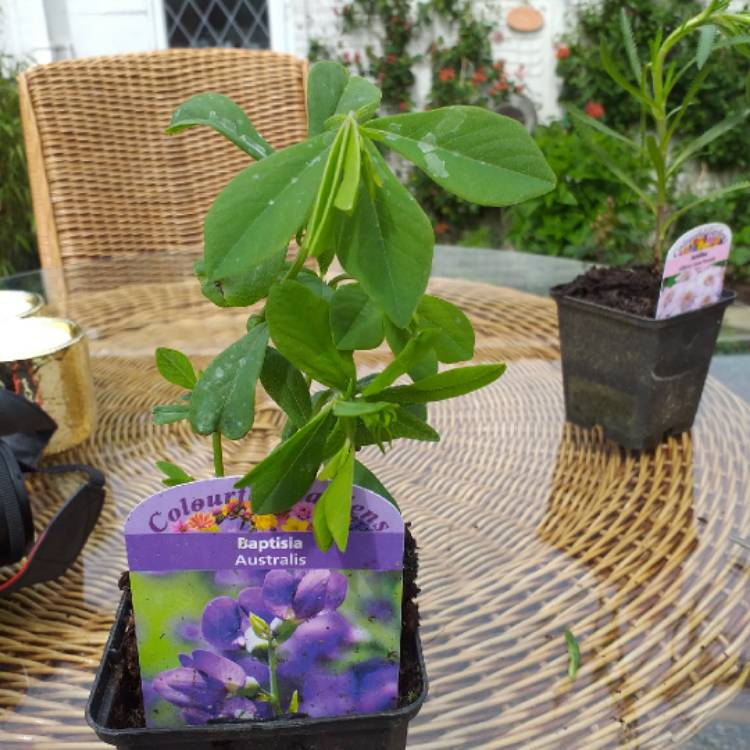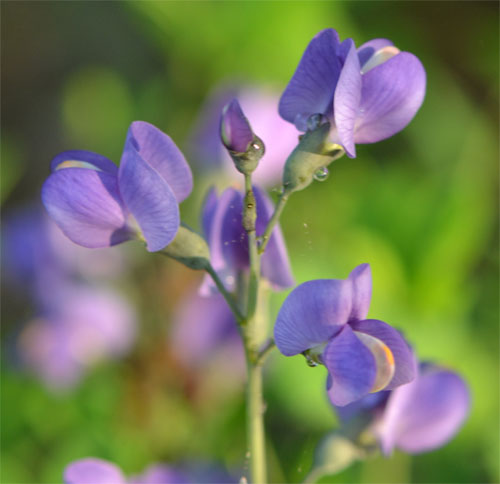

Slow to develop from seed, it is worth the wait as it makes for a head-turning display of blue, purple, or lavender flowers. Īlthough it is herbaceous and dies back every Winter, Blue False Indigo is long-lived and puts up multiple shoots to give it a shrub-like appearance. Growing to a mature height of 4′ tall and wide, it attracts bees and hosts several butterflies. Scientifically known as Baptisia Australis, it will grow beautiful blue to purple pea-like flowers in Spring and have lovely smooth blue-green foliage all year.
 What Wildlife, Pests, and Diseases effect Blue False Indigoīlue False Indigo is a large, showy perennial flower native to North America.
What Wildlife, Pests, and Diseases effect Blue False Indigoīlue False Indigo is a large, showy perennial flower native to North America. Blue false indigo baptisia australis how to#
How to Grow Blue False Indigo from seed.How to Grow and Care for Blue False Indigo.
 What are the benefits of Blue False Indigo. This will be a complete profile on this flower. I’ve grown dozens of these plants and have learned a thing or two, and I can share what I’ve learned with you. The display that it puts on is truly ‘head-turning’. I’ve been growing this lovely flower for over 5 years and truly love it. New spring leaves will redecorate the plant and the intense, lovely, lavender blue flowers will run rampant among the old growth, hiding it and producing a floral attraction year after year without your intervention.If you’re interested in a flower that blooms in late Spring when most other plants aren’t blooming, one that doesn’t need fertilizer or watering….Oh, and how about if it has some of the most beautiful foliage of all? Well then, say hello to Blue False Indigo (Scientific Name, Baptisia Austalis). One of the best things about Baptisia is that you really don’t even have to meddle with pruning it. The plant will quickly grow to surpass its former height. For rejuvenation false indigo pruning, cut the plant to within 6 inches (15 cm.) of the ground in late winter to early spring. The angle should slant downward to force any moisture off the cut surface and away from the woody plant material.īaptisia can simply be trimmed to take off the old flowers and seedpods or you can take it nearly to the ground. Cut at a slight angle just barely above new bud nodes. This encourages clean cuts and minimizes the transfer of plant disease. Use sharp, clean pruning shears and loppers any time you cut plant material. You can also choose to do nothing, but the old growth will detract from the new leaves and stems to some degree. Prune away the old growth from late winter to spring. The leaves caught in the stems will serve as a blanket for the roots. In cooler climates, pile the leaves around the stems and let the plant persist until spring. This will indicate that the plant has entered dormancy and it will not suffer from having most of its stems removed. Gardeners who hate to look at spent plants in their garden can certainly trim the plant back in fall when all the leaves have dropped. This is because the old stems and foliage act as protection for the plant, making a canopy over the tender root zone. The optimum time for cutting back Baptisia and most other perennials is in late winter. Light trimming will cause the plant to produce a flush of growth that is closer to the stems. The third reason for cutting back Baptisia is to force young plants to produce fuller bushes. These are actually quite ornamental but the spent flowers and seed heads may pose a visual distraction so they can be snipped off. Some gardeners prefer to cut the plant back before it dies down in fall, but this isn’t obligatory and is just a cosmetic step.Īnother reason to trim Baptisia is to remove the seed heads. You can choose to do this type of tidying up at any time of the year. After storms or rough games of “shirts and skins” in the backyard, a little trimming may be required to remove any damaged stems. Cutting back Baptisia is not necessary, but if you like to maintain a perfectly manicured landscape, there are three instances where it might be suitable to prune the plant.īaptisia will die back to the ground in most regions, so clean-up pruning in fall is not necessary. This is the case regarding false indigo pruning. Nobody goes out in nature and prunes plants, so it would stand to reason that native species are built to grow just fine without pruning. Let’s learn when and how to prune Baptisia. Can I prune Baptisia? If you wish, you can deadhead to remove the old foliage and leggy plants can be trimmed lightly to force a flush of growth. Baptisia is an easy-to-care-for plant with a moderate growth rate and no need to prune or train. The plant is native to North America and with its deep blue blooms, provides a perfect enhancement to the native perennial garden. Baptisia has long held importance as a dye for textiles.
What are the benefits of Blue False Indigo. This will be a complete profile on this flower. I’ve grown dozens of these plants and have learned a thing or two, and I can share what I’ve learned with you. The display that it puts on is truly ‘head-turning’. I’ve been growing this lovely flower for over 5 years and truly love it. New spring leaves will redecorate the plant and the intense, lovely, lavender blue flowers will run rampant among the old growth, hiding it and producing a floral attraction year after year without your intervention.If you’re interested in a flower that blooms in late Spring when most other plants aren’t blooming, one that doesn’t need fertilizer or watering….Oh, and how about if it has some of the most beautiful foliage of all? Well then, say hello to Blue False Indigo (Scientific Name, Baptisia Austalis). One of the best things about Baptisia is that you really don’t even have to meddle with pruning it. The plant will quickly grow to surpass its former height. For rejuvenation false indigo pruning, cut the plant to within 6 inches (15 cm.) of the ground in late winter to early spring. The angle should slant downward to force any moisture off the cut surface and away from the woody plant material.īaptisia can simply be trimmed to take off the old flowers and seedpods or you can take it nearly to the ground. Cut at a slight angle just barely above new bud nodes. This encourages clean cuts and minimizes the transfer of plant disease. Use sharp, clean pruning shears and loppers any time you cut plant material. You can also choose to do nothing, but the old growth will detract from the new leaves and stems to some degree. Prune away the old growth from late winter to spring. The leaves caught in the stems will serve as a blanket for the roots. In cooler climates, pile the leaves around the stems and let the plant persist until spring. This will indicate that the plant has entered dormancy and it will not suffer from having most of its stems removed. Gardeners who hate to look at spent plants in their garden can certainly trim the plant back in fall when all the leaves have dropped. This is because the old stems and foliage act as protection for the plant, making a canopy over the tender root zone. The optimum time for cutting back Baptisia and most other perennials is in late winter. Light trimming will cause the plant to produce a flush of growth that is closer to the stems. The third reason for cutting back Baptisia is to force young plants to produce fuller bushes. These are actually quite ornamental but the spent flowers and seed heads may pose a visual distraction so they can be snipped off. Some gardeners prefer to cut the plant back before it dies down in fall, but this isn’t obligatory and is just a cosmetic step.Īnother reason to trim Baptisia is to remove the seed heads. You can choose to do this type of tidying up at any time of the year. After storms or rough games of “shirts and skins” in the backyard, a little trimming may be required to remove any damaged stems. Cutting back Baptisia is not necessary, but if you like to maintain a perfectly manicured landscape, there are three instances where it might be suitable to prune the plant.īaptisia will die back to the ground in most regions, so clean-up pruning in fall is not necessary. This is the case regarding false indigo pruning. Nobody goes out in nature and prunes plants, so it would stand to reason that native species are built to grow just fine without pruning. Let’s learn when and how to prune Baptisia. Can I prune Baptisia? If you wish, you can deadhead to remove the old foliage and leggy plants can be trimmed lightly to force a flush of growth. Baptisia is an easy-to-care-for plant with a moderate growth rate and no need to prune or train. The plant is native to North America and with its deep blue blooms, provides a perfect enhancement to the native perennial garden. Baptisia has long held importance as a dye for textiles.







 0 kommentar(er)
0 kommentar(er)
